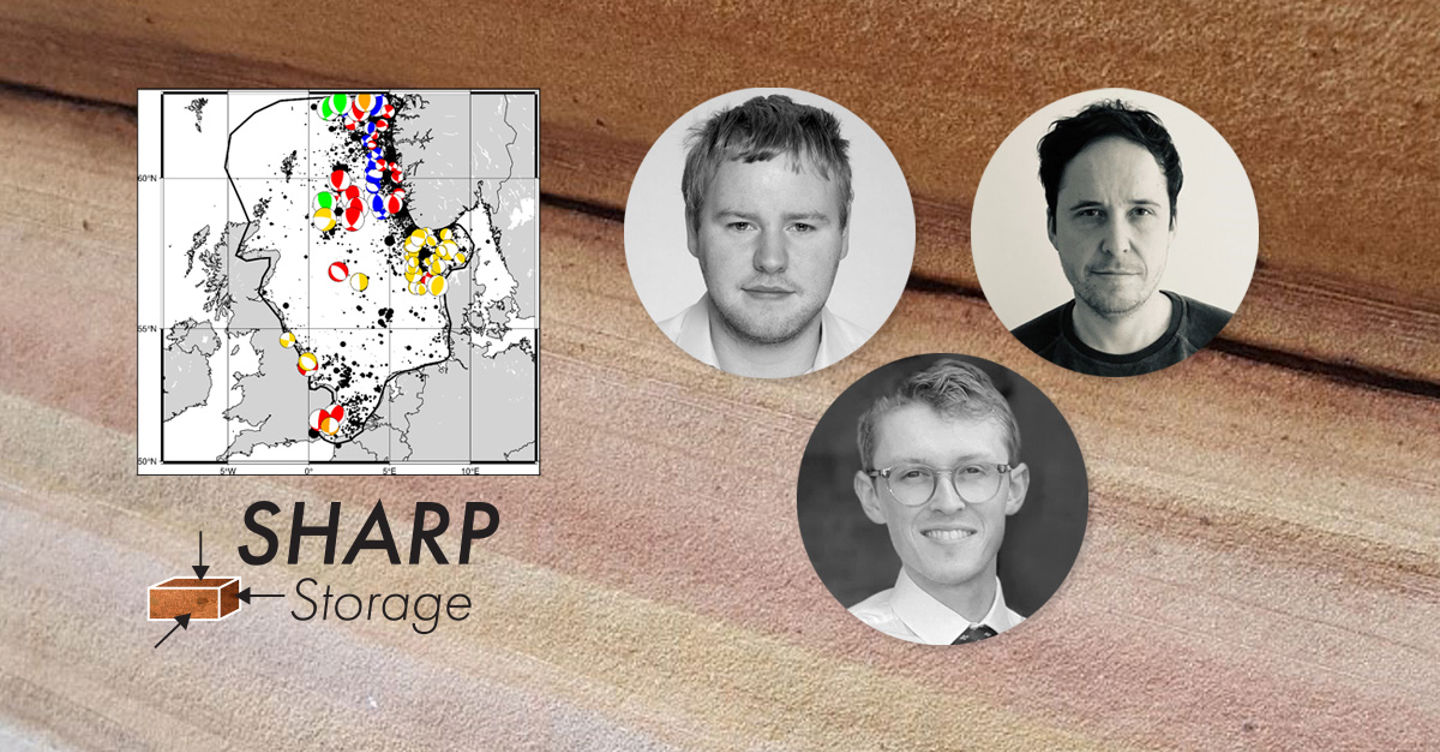Webinar - Updates to North Sea stress models
In this webinar, three short talks will share recent work undertaken to improve our understanding of in-situ stress in the North Sea. The work is part of the SHARP Storage project, an ACT funded research project, with a trans-national consortium of 16 partners from 5 countries.

Time: January 25th, 15.00 Oslo time, 1 hour
The overall project aim is to increase the accuracy of subsurface CO2 storage containment risk management. A key activity is to improve both regional and site-specific stress models for the North Sea.
The SHARP Storage project is coordinated by the Norwegian Geotechnical Institute (NGI) and more info about partners and research tasks can be found on the webpage.
Talks

( Mark Felgett, BGS)
Borehole stress observations across the North Sea Basin
Borehole stress observations offer the opportunity to characterise the regional stress field in the top three kilometres below surface across the North Sea Basin. Once the stress state is accurately established at a regional scale, detailed investigation of site-specific processes can identify local perturbations in stress magnitude and principal stress orientations. Examples include halokinesis or major faulting which in turn impact those parameters that affects uses of the subsurface such as CO2 storage. This talk will focus on work undertaken in the SHARP Storage project to increase the available processed data outputs for stress field orientations, at both near and far field scales, but will also demonstrate how this information can in turn be used to identify changes in the stress field.
Mark Fellgett is a petrophysicist at the British Geological Survey who specialises in in-situ stress analysis from borehole data. Over the last 8 years he has worked to characterise the shallow stress field in the UK and UKCS providing information to UK Government and industry and for research studies.

( Tom Kettley, Oxford University)
Seismologically-dervied stress data for the North Sea
The collection of seismic data with the SHARP project has led to many research activities that give valuable information on the state of stress in the North Sea. In this talk, each of these activities will be summarised and put into context. This will show how earthquake data can add to the characterisation of a CO2 storage site, and how the different sources of stress information can marry to give a clearer picture of the regional state of stress.
Dr Tom Kettlety is the Oxford Net Zero Research Fellow in Geological Carbon Storage, working within the Department of Earth Sciences. Tom studies earthquakes that are triggered by industrial injection of fluids into the subsurface, using measurements from these earthquakes to better understand the interaction of fluids and faults underground.

( Daniel Roberts, Rockfield Software)
Incorporating Stress History and Lithology into Geomechanical Models of CO2 Storage Sites.
Robust initial stress estimates are important for establishing operational limits at storage sites. Improved quantification of stress allows for better forecasting of stress changes during storage, and enables safer storage by helping to avoid potential seal failure or fault reactivation. The presentation will give a concise overview of multidisciplinary efforts to account for stress history and lithological contributions to stress across the North Sea. New workflows and techniques have been developed and applied through the SHARP project.
Dan Roberts is a project manager for geomechanics studies at Rockfield Software. He has a masters degree in civil engineering and a PhD in geomechanical modelling.